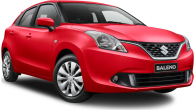Buyers of cars in the Polo-size class prefer Asian products that generally cost considerably less than the little German machine, but the Polo is slightly larger, it is a more substantial vehicle than its lower-priced rivals and comes with a much more solid feel that is likely to mean it will have a longer life.
The Polo first went on sale in Australia in October 1996 but struggled in those early years, partly due to its being more expensive than Asian cars but also because of its rather bland styling.
New-car sales picked up during early 2000 due to price cuts, better promotion and the introduction of a significant number of new variants.
From the new model introduced in July 2002 the Polo became reasonably stylish, although it was still no fashion plate.
What certainly hadn't been changed was the traditional German toughness of the body. The Polo is like every other Volkswagen in displaying impressive stiffness that bodes well for long life.
The smallest Australian VW has such safety features as twin airbags, pyrotechnic front seat-belt retractors and anti-submarining seat bases.
An immobiliser is built into the engine management system.
Polo is a well-designed car and, while the front seats are fine for two large adults, the back is probably best left to children.
The boot is better than average for the class, but certainly not spacious.
Handling is nothing special; Polos are inclined to too much oversteer. It can show up in anything more than moderate cornering and is presumably there to maximise safety in the hands of clumsy drivers.
The understeer was pulled way back in the new model of 2002, but is still there at extremes, which is exactly the way it should be in a road car aimed at the average person.
Most Polos sold in Australia are hatchbacks, with either two or four passenger doors, but an interesting Polo Classic four-door sedan was imported, from China of all places, during 2004 and 2005. It wasn't a success due to dubious quality control.
Another interesting model is the Open Air of 1998 to 2000. Though a five-door hatchback, it had a huge sunroof that could let in plenty of fresh air when fully open.
A VW Eos it's not, but the Polo Open Air can be used a low-cost substitute.
Volkswagen has undergone a revolution in Australia in recent years, thanks to a smart new management team. That has led not only to better sales results but to more dealerships, some with larger facilities.
Service and repairs are moderate in price, though they can be higher than for equivalent-size Korean cars.
We have heard of no real complaints about cost or availability of spare parts.
Good amateur mechanics should be able to do a fair bit of their own work; as the Polo has a simple mechanical layout and the underbonnet area isn't too crowded.
Have a repair manual at your side before lifting the bonnet, and keep away from any repairs that could affect safety.
Insurance costs are about average for a car in this European class.
You are likely to be charged extra, possibly substantially extra, to cover the Polo GTi because of its turbo engine.
Under the bonnet
All the original Polos in Australia had petrol engines. Capacities in the standard models were 1.4 and 1.6 litres.
Performance from the smaller engine is better than you might expect due to the car's relatively light weight, but try one for size to see what you think before settling on this little engine.
The 1.4 engine from the year 2000 was a more modern unit than the original so is probably the one to aim for.
Interestingly, the 1.6-litre engine used in the Polo Classic (the Chinese model) uses a twin-cam setup, whereas the others have a single-cam head.
In both cases there are 16 valves per cylinder.
Polo GTi isn't the real pocket rocket its name might suggest, chiefly because the turbocharged 1.8-litre engine is running only modest boost, and develops just 110kW. Where it does work nicely is in mid-range torque, making it reasonably fast but not flighty in its characteristics.
Stiffer suspension and added precision in the steering means the Polo GTi gives you a lot of driving fun at a pretty modest price.
Volkswagen Polo joined the diesel car revolution in Australia in November 2005 when a huge 1.9-litre engine was installed.
Having 240Nm under the bonnet of a small car like this gives it surging acceleration that's great to sit within.
These little diesel cars are still rare on the used scene, but you never know your luck.
Transmission options are five-speed manual and four-speed auto in most models.
The Polo Classic sedan, GTi and TDI diesel are sold only with the manual.
Danger signs
Rust isn't common as factory protection is very good. If there is any rust, it's likely to be the result of poor crash repairs.
If so, have the Polo fully inspected by a professional as anything other than minor repairs is a worry.
Interiors generally stand up well, but Polos that have been kept in the open air may suffer from sun-dried dashboard tops and rear shelves.
Engines aren't as smooth or sophisticated as those of many competing cars but be suspicious if it's too rough.
In particular, listen for engine noises when you work it hard.
Look for smoke from the exhaust when it's under maximum acceleration.
Make sure a manual gearbox doesn't crunch on fast downchanges. Check that an automatic transmission is positive in its shifts and isn't slow at going into Drive or Reverse from Park or Neutral.
Check that the brakes pull the car up evenly without an excess of pedal effort.
Volkswagen Polo 2007: TDI
| Engine Type | Diesel Turbo 4, 1.9L |
|---|---|
| Fuel Type | Diesel |
| Fuel Efficiency | 5.0L/100km (combined) |
| Seating | 5 |
| Price From | $3,740 - $5,500 |










































.jpg)

